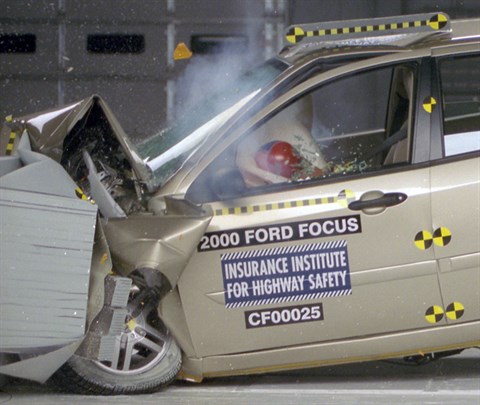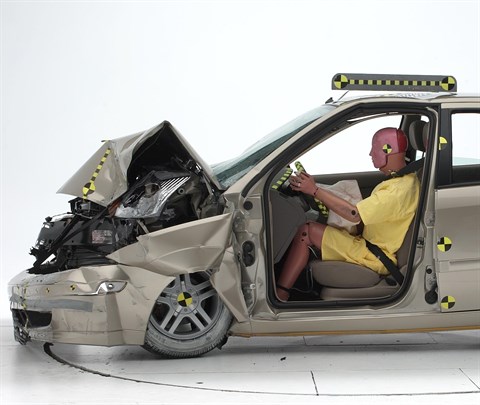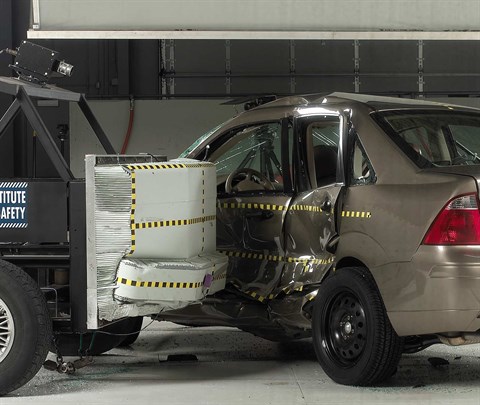Moderate overlap front: original test
Rating applies to 2000-07 models
Tested vehicle: 2000 Ford Focus SE 4-door
The Ford Focus was introduced in the 2000 model year and modestly restyled for the 2005 model year.
| Evaluation criteria | Rating |
|---|---|
| Overall evaluation | |
| Structure and safety cage | |
| Driver injury measures | |
| Head/neck | |
| Chest | |
| Leg/foot, left | |
| Leg/foot, right | |
| Driver restraints and dummy kinematics | |

Action shot taken during the frontal offset crash test.

The dummy's position in relation to the steering wheel and instrument panel after the crash test indicates that the driver's survival space was maintained reasonably well.

Loading of the head into the airbag is shown in this photo taken during the crash test.

Footwell intrusion contributed to the possibility of injury to the lower left leg.
Side: original test
Rating applies to 2000-07 models
Tested vehicle: 2005 Ford Focus ZX4 SE 4-door without optional side airbags
The Ford Focus was introduced in the 2000 model year and modestly restyled for the 2005 model year.
| Evaluation criteria | Rating |
|---|---|
| Overall evaluation | |
| Structure and safety cage | |
| Driver injury measures | |
| Head/neck | |
| Torso | |
| Pelvis/leg | |
| Driver head protection The dummy's head was hit by the intruding barrier, producing high head injury measures. | |
| Rear passenger injury measures | |
| Head/neck | |
| Torso | |
| Pelvis/leg | |
| Rear passenger head protection The dummy's head was hit by the intruding barrier, as well as the window sill and window frame of the rear passenger door and the pillar behind the door. These impacts did not produce high head injury measures, but the head protection is inadequate. | |

View of the vehicle and barrier just after the crash test.

View of the vehicle after the crash with doors removed, showing damage to the occupant compartment.

Action shot taken during the side impact crash test showing the driver dummy's head being hit by the intruding barrier.

Smeared greasepaint shows where the rear passenger dummy's head was hit by the window sill and window frame of the rear passenger door and the pillar behind the door. The head was also hit by the intruding barrier (not shown).
Head restraints & seats
Seat type: Manual cloth seats
| Overall evaluation | |
|---|---|
| Dynamic rating | |
| Seat/head restraint geometry |
About the head restraint & seat test
Currently, IIHS tests apply only to front seats.
